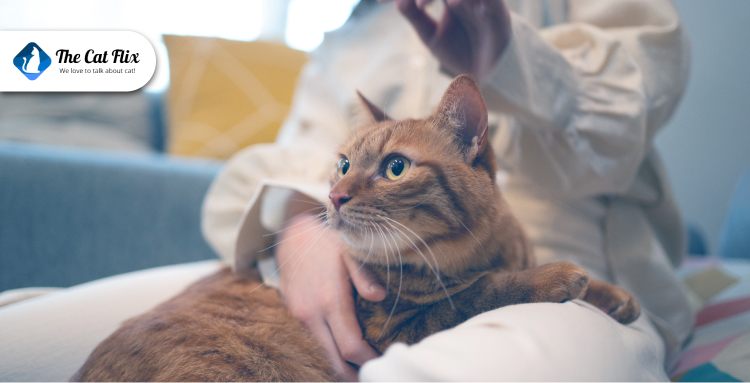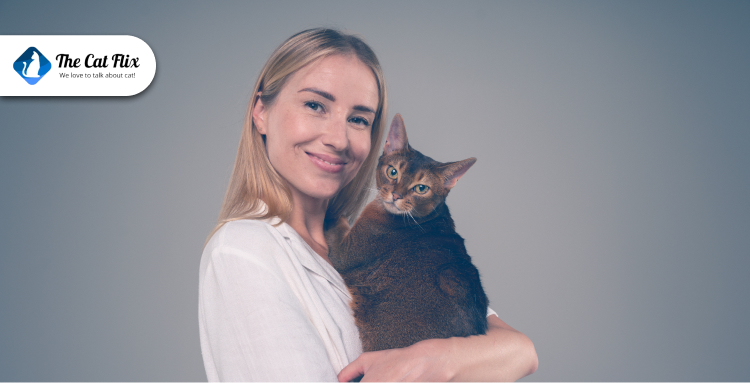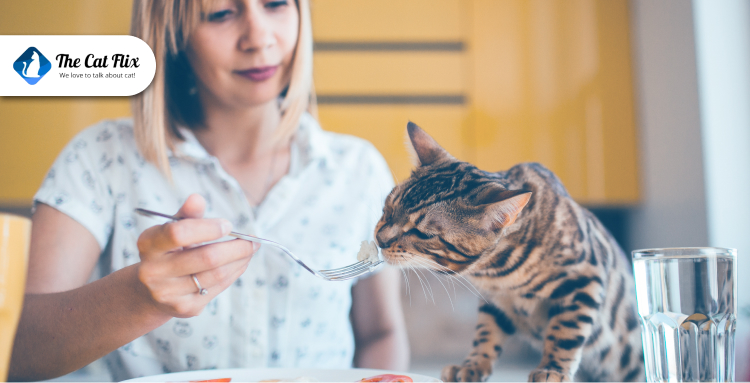We like to believe we understand our pets. That we know what’s best for them. But cats, those elegant enigmas, often remind us that even love doesn’t guarantee compliance. Especially not when it involves their food bowl.
Maybe it’s time for a change. A better diet, a healthier life. But with cats, the how is just as important as the what. And before we dive into that delicate process, it’s worth understanding the larger picture—why so many of us are facing this transition in the first place.
“Over 58% of cats in the U.S. are either overweight or obese.”
— American Veterinary Medical Association (AVMA)
And yet, despite good intentions, many pet parents rush the process, only to be met with rejection, upset stomachs, or days of untouched kibble. The goal isn’t just to change what they eat. It’s to change how we guide them through it.
1) The Science of Change: Why Cats Don’t Like Sudden Surprises
If you’ve ever swapped out their favorite kibble for something healthier, only to be met with cold indifference (or worse, a protest puke), you’ve already brushed up against a feline trait known as neophobia (the fear of new things).
Unlike dogs, who might dive headfirst into a bowl of anything that smells remotely edible, cats are creatures of careful ritual. Their relationship with food is steeped in familiarity. From a young age, many cats develop what scientists call food imprinting, where they become attached to specific textures, flavors, or even the shape of their kibble. So, when that daily comfort suddenly changes, it unsettles them.
And it’s not just in their minds. Their bodies protest, too. A cat’s digestive system is tuned to routine, and when you change their food too quickly, their gut bacteria doesn’t have time to adjust. It may result in diarrhea, vomiting, or complete appetite shutdown.
“A cat’s gastrointestinal system typically requires 7 to 10 days to adapt to a new diet.”
— PetMD
It’s not about being picky. It’s about survival instincts hardwired over thousands of years. In the wild, eating unfamiliar food could mean danger. In your home, it just means a stare-down at dinner and a whole lot of frustration on both sides.
2) The 10-Day Transition Plan: From Old Bowl to New Beginnings

Cats are masters of routine. They nap in the same spots, scratch the same corners, and—yes—expect their meals to stay exactly the same. So, if you’re going to change what’s in their bowl, you’ll need more than just a new bag of food. You’ll need a strategy.
The 10-day transition plan is a slow and steady approach that gives your cat (and their digestive system) time to adjust without causing chaos in the litter box.
Here’s how it works:
Your Cat’s 10-Day Transition Timeline
| Day Range | Old Food | New Food |
| Days 1–3 | 75% | 25% |
| Days 4–6 | 50% | 50% |
| Days 7–9 | 25% | 75% |
| Day 10 | 0% | 100% |
This isn’t just about easing taste preferences. It’s about supporting your cat’s gut microbiome—the internal ecosystem that plays a big role in their immune health and digestion.
Think of it as training wheels for their tummy. Rushing this process could lead to vomiting, diarrhea, or full-on food refusal. But take it slow, and you’re setting the stage for a smooth and stress-free switch.Even, you should clean cat’s teeth gently without giving them stress.
3) Tempting the Taste Buds: Tips to Encourage Curious Nibbles
Cats don’t just eat for nourishment—they eat for comfort. That familiar bowl, the rhythm of mealtime, the warm scent of something they trust—it’s part of their world, their sense of home. So when a new food appears, even one packed with better nutrients, it can feel more like a disruption than an upgrade. It all seems overwhelming for you, especially if you move cross-country with your cat.
The good news? There are gentle ways to coax your cat into giving that new food a fair shot—without turning dinner into a battle of wills.
Little Tricks with Big Payoff:
- Warm it up slightly. Just a few seconds in the microwave (if it’s wet food) can release aroma and make it more appealing. Cats rely heavily on smell to decide what’s edible.
- Use a topper—sparingly and safely. A sprinkle of freeze-dried meat, a spoonful of tuna water, or a vet-approved gravy topper can bridge the gap between old love and new flavor.
- Stick to a schedule. Feeding at consistent times builds anticipation and encourages routine-driven eating. Free-feeding may seem kind, but structure brings comfort.
- Keep the bowl clean. Cats can be surprisingly particular about the smell and freshness of their dishes—especially when something new is introduced.
These techniques aren’t about “tricking” your cat—they’re about making the unfamiliar feel familiar. Food, for them, isn’t just fuel—it’s ritual, memory, and reassurance. If they were once strays or had a rocky start in life, the bowl may be the one safe thing they count on. That’s not something we want to change overnight.
“In a 2022 survey, 35% of cat owners admitted to switching their cat’s food without understanding how to do it properly.”
— Association for Pet Obesity Prevention
That’s not a knock on loving pet parents. It’s a reminder: good intentions need good information. And sometimes, what seems like a small detail—warming food, keeping mealtime sacred—can make all the difference between rejection and curiosity.When your cat is healthy, it helps to reduce aggression between cats living together.
4) Red Flags: When Your Cat Says “No Thanks” with More Than Just Silence

Cats aren’t always great at telling us what’s wrong—but they’re excellent at showing us. If your cat’s new food is being met with more than a turned-up nose—think vomiting, runny stools, or just laying around like they’ve had a rough night out—it’s time to hit pause.
Sometimes, it’s just a matter of getting used to new flavors or textures. Other times? It might be something more serious.
Is It Pickiness or a Problem?
- Pickiness usually shows up as sniffing and walking away, maybe pawing at the bowl in dramatic protest. But your cat still seems active, curious, and otherwise normal.
- Food intolerance or digestive upset can include:
- Vomiting shortly after eating
- Diarrhea lasting more than a day
- Bloating or visible discomfort
- Lethargy or hiding behavior
If your cat skips a meal or two but stays active and alert, you can probably give it another day. But if symptoms pile up—or your cat isn’t eating at all—you need to act fast.
“Cats can’t go more than 24–36 hours without eating before liver issues arise.”
— Dr. Jennifer Coates, PetMD
Unlike dogs, who can fast a little longer without serious harm, cats are vulnerable to a condition called hepatic lipidosis—a potentially life-threatening liver disorder that can develop when they go too long without food.
5) Special Diets for Special Cats: Health Conditions That Require Change
Not all diet changes are about flavor or preference. Sometimes, they’re about necessity. Maybe your cat’s been diagnosed with a chronic condition. Maybe the vet noticed some early signs during a check-up. In these moments, switching food becomes less about choice—and more about care.
Let’s walk through the most common medical reasons your cat might need a dietary shift:
-
Kidney Disease
Chronic kidney disease (CKD) is common in older cats. It affects how their kidneys filter waste, and over time, it can take a serious toll on energy, hydration, and appetite.
Prescription kidney diets are typically lower in phosphorus and protein and higher in omega-3 fatty acids to reduce kidney strain.
-
Food Allergies or Sensitivities
If your cat suddenly starts scratching more than usual, develops digestive issues, or seems uncomfortable after meals, food allergies could be the culprit.
A hypoallergenic or limited ingredient diet isolates the issue. Often, it’s a common protein like chicken or beef causing trouble.
-
Diabetes Mellitus
Diabetic cats need blood sugar stability, which means cutting down on high-carb kibble. Most vets recommend high-protein, low-carbohydrate diets, often in wet food form, to help manage glucose levels.
-
Weight Management
According to the AVMA, obesity is one of the most common preventable health issues in cats—and it’s directly linked to diabetes, arthritis, and a shorter lifespan.
Weight-control diets are designed to help cats feel full with fewer calories, using higher fiber and leaner protein. But as with any diet, it’s not just about the food—it’s about consistency, portion control, and regular vet check-ins.
The Catflix Believes in Progress, Not Perfection

We live in a world that moves fast. That expects instant results. But our feline companions remind us that some things, like trust, change, and dinner, happen on their own time.
Introducing a new diet to your cat is a negotiation. Sometimes, a standoff. But more than anything, it’s a chance to understand them a little better. To watch, to wait, and to meet them exactly where they are.
We believe mealtime is a soft moment of connection between two very different species who, somehow, have chosen to share life under the same roof.
So, drop your cat’s food drama, victories, or “they only eat off my hand” moments in the comments.
Let’s swap stories, share tips, and celebrate progress.

